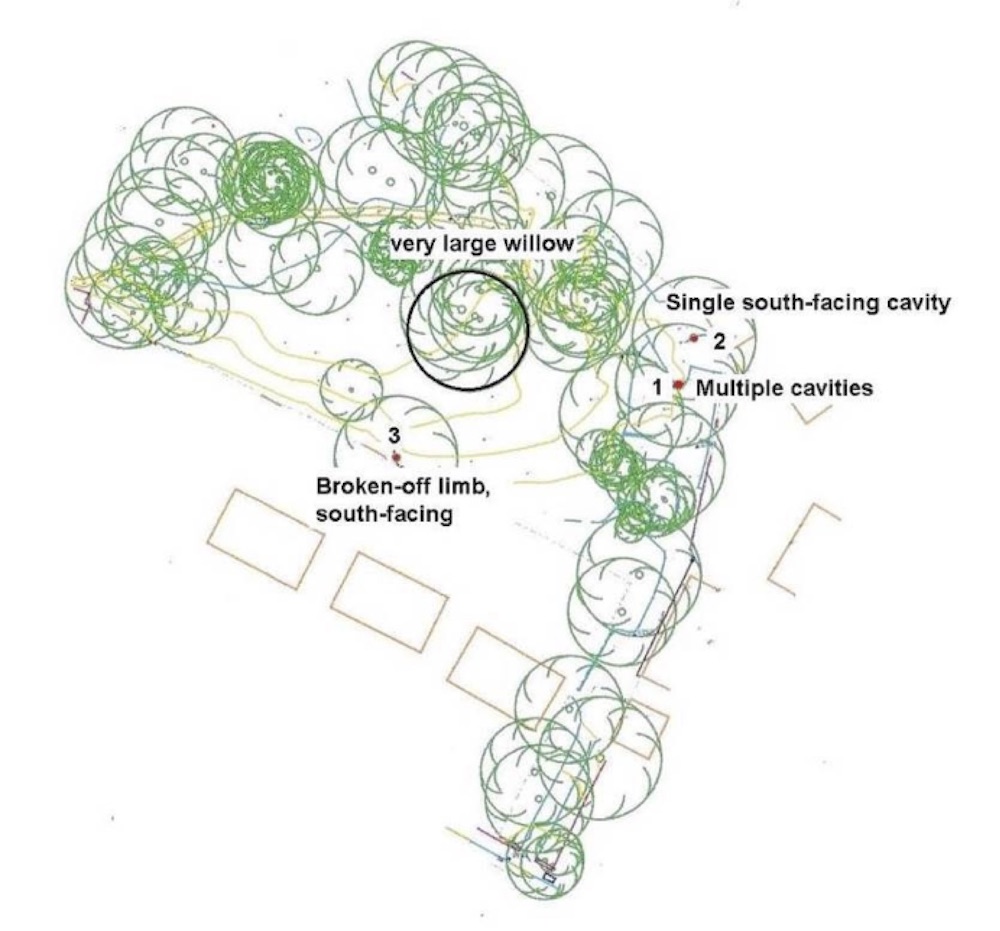Bats
31/12/19 22:46
The possibility of trees on the lane/field being bat roosting sites was also considered and the land was surveyed to consider this. As this survey was performed in daylight in October 2018 the chances of actually seeing a bat were minimal and this was acknowledged in the report. The survey rather concentrated on which trees had potential roosting sites.
I have undertaken daubenton bat surveys on the river Irwell for the Bat Conservation Trust for a number of years now, though my bat detection skills are not brilliant. I have also wandered along the lane and through the field then over above Marl Pits from time to time and noted a number of species, though the only ones on the lane itself are pipistrelles and soprano pipistrelles. It is also fun to sit in the garden on a summer evening and watch the bats fly over Springhill House from the direction of Sion, so I wouldn't be surprised if they roosted there though have never been looking.
The bat survey described three trees which had roosting potential:
A large ash on the north side of the proposed boundary of the bungalow, with three cavity openings in the main trunk up to about 5 m above ground level. This is probably T14.
A small-leaved lime just north of this ash. It has a single opening on the south side at about 3.5m and is T15.
Another ash, this time close to the southern boundary of the proposed bungalow at its eastern aspect with cavity on the southern side ta 4m above ground level. This is T29.
(for further details see the post 'lane/field trees' on 22/12/2019)

These are not trees which are directly threatened by the development, nevertheless the surveyor recommended that work be carried out outside winter to ensure any bats hibernating there are not disturbed.
I have undertaken daubenton bat surveys on the river Irwell for the Bat Conservation Trust for a number of years now, though my bat detection skills are not brilliant. I have also wandered along the lane and through the field then over above Marl Pits from time to time and noted a number of species, though the only ones on the lane itself are pipistrelles and soprano pipistrelles. It is also fun to sit in the garden on a summer evening and watch the bats fly over Springhill House from the direction of Sion, so I wouldn't be surprised if they roosted there though have never been looking.
The bat survey described three trees which had roosting potential:
A large ash on the north side of the proposed boundary of the bungalow, with three cavity openings in the main trunk up to about 5 m above ground level. This is probably T14.
A small-leaved lime just north of this ash. It has a single opening on the south side at about 3.5m and is T15.
Another ash, this time close to the southern boundary of the proposed bungalow at its eastern aspect with cavity on the southern side ta 4m above ground level. This is T29.
(for further details see the post 'lane/field trees' on 22/12/2019)

These are not trees which are directly threatened by the development, nevertheless the surveyor recommended that work be carried out outside winter to ensure any bats hibernating there are not disturbed.




